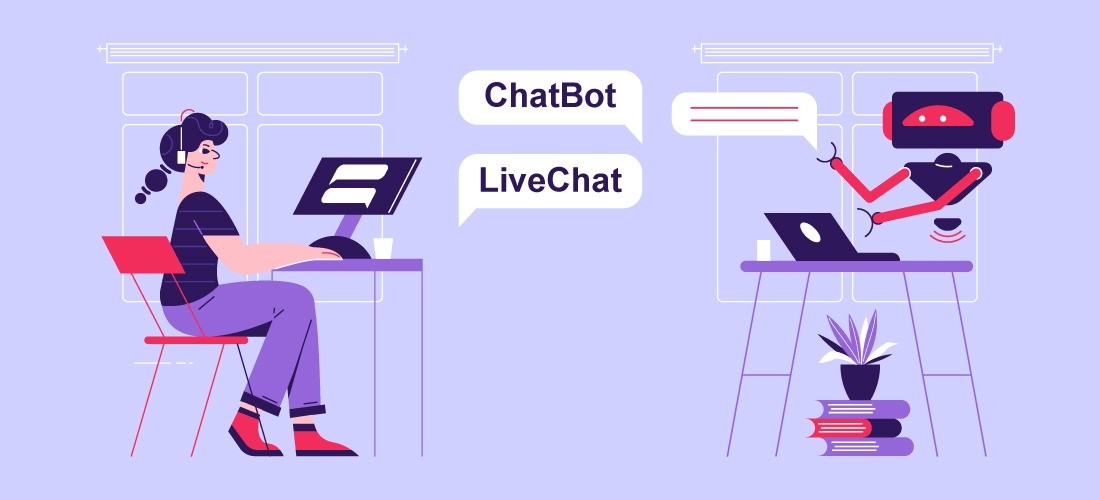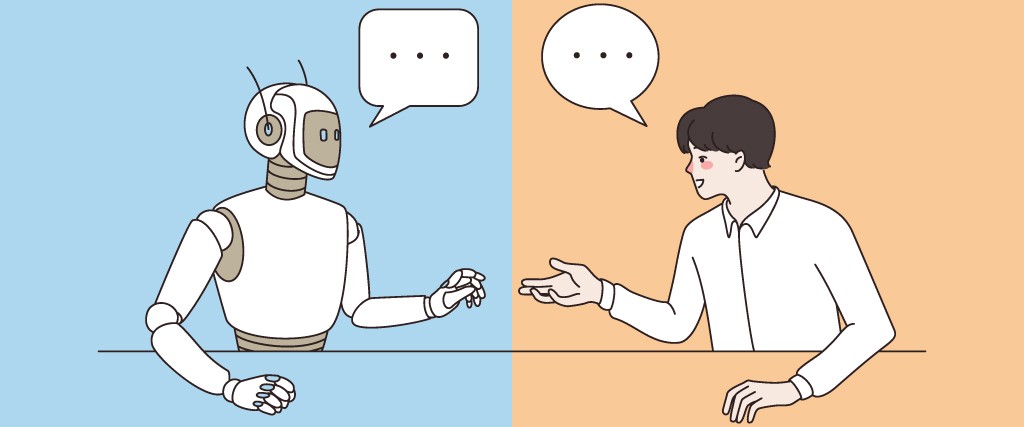Human Agents and Chatbots: As chatbots gain traction, corporate executives around the world are praising their many customer service perks.
However, we are still far from being able to entirely eliminate human interaction in customer service procedures.
How can chatbots be used to work seamlessly with human agents to streamline and change consumer contact centers in such a scenario?
Chatbots for Customer Service- Human Agents and Chatbots
Because outstanding customer service is such an important component of company success nowadays, companies go to tremendous lengths to build the most efficient and successful customer contact centers.
Automation and artificial intelligence (AI) are increasingly being employed in contact centers that used to be handled by human operators who were trained to correctly handle consumer questions and complaints.
Most firms who want to automate and streamline a part of their customer service process are already considering chatbots.

Chatbots are conversational AI software that uses Machine Learning and Natural Language Processing (NLP) algorithms to interpret the ‘meaning’ of an inquiry and respond appropriately.
According to Gartner Inc., virtual customer assistants (VCAs) or chatbot technology will be used by 25% of customer care and support operations across all engagement channels by 2020.
This percentage has risen drastically from less than 2% in 2017.
The Advantages of Using Chatbots in Customer Service Centers

Human Agents and Chatbots: Today’s chatbots are capable of simulating human-like communication and resolving both simple and complex client difficulties.
Chatbots may quickly take over simple jobs from human agents, such as giving a fast response to a customer, such as ‘Okay, we’ll check into it.’ or answering Frequently Asked Questions (FAQ).
Because most customer service queries are low-level and repetitive, this dramatically increases agent productivity.
Customer satisfaction is heavily influenced by how quickly you respond. Chatbots assist businesses in gaining consumer pleasure and confidence in this aspect.
Another advantage of adopting chatbots is that they can handle customer service at all hours of the day and night. Time is not a parameter that chatbots may use, unlike humans.
When Is It Necessary to Call in Agents?
While chatbots can handle simple and complex inquiries with ease, there will be times when only agents can address the problem.
Human action is necessary at this point. Consider a situation in which a customer is upset and needs rapid assistance. A chatbot, on the other hand, is unable to comprehend their emotion or urgency.
Another possibility is during the debut of a new product or service. Assume your business has just launched a new product or service.
Customers who are still trying to figure things out will see a surge in service inquiries. Agent intervention will be required if your current chatbot has not been taught to answer these new types of questions.
There may also be instances where a customer seeks assistance in solving a unique challenge. Chatbots may not be able to help in such circumstances.
A Model of Coexistence Between Human Agents and Chatbots

Essentially, businesses must consider creating a cohabitation model in which chatbots work alongside human agents to boost productivity.
Chatbots can be employed as the first line of customer care agents, performing basic, preparatory activities such as accumulating user data, answering repetitive queries, sending pertinent information, and taking down details about customer issues.
The chatbot can also hand over the conversation to a live agent in the event of an escalation or at the request of a customer. This is referred to as “agent handoff.”
Any customer support chatbot should, ideally, provide the ability to switch to live chat. It should also be clever enough to recognize the context of the discussion and direct clients to a human agent for assistance.
Virtual Customer Assistants Are Trained by Humans
To learn and grow intelligently, an AI system requires a human-in-the-loop feedback system. An AI system interacts with several types of individuals during its career, all of whom have an impact on its intelligence.
Even the tiniest piece of client feedback, such as “click here if you are satisfied with the answer,” can assist enhance a chatbot’s machine learning algorithm.
Contact center agents, in addition to consumer training, can classify outliers and exceptions and assist in the modification of chatbot training data and behavior.
Educate your customer service representatives on the topic of chatbots- Human Agents and Chatbots
The perceived threat that chatbots represent to your agents’ jobs is one of your agents’ concerns about chatbot installation.
The present labor at contact centers feels endangered, despite the fact that we are still a long way from entirely eliminating human staff.
This is a demotivating factor for employees and one that businesses should consider when implementing chatbots.
While most call center employees may perceive chatbots as competitors, this is not the reality. Educate your agents on how chatbots may help them tackle low-value client issues while also increasing productivity and streamlining their work.
Demonstrate the chatbot’s capabilities so that they may have a better idea of how it works.
The Future
YugasaBot introduces a new functionality called Human Agent. Customer service chatbots will inevitably become necessary sooner or later.
Chatbot adoption can assist businesses in providing round-the-clock support to their consumers, decreasing the pressure on human customer service agents and lowering employment expenses.
Essentially, chatbots can assist businesses in providing better customer service while using fewer personnel.
Although the human touch cannot be totally removed from customer service, chatbots can be used to reduce human intervention as much as feasible.
This can be accomplished by employing chatbots to handle a greater volume of customer requests while leaving only the most complex issues to be handled by human agents.
Given chatbots’ current capabilities, the issue begs to be asked: Can chatbots totally replace human customer service?
No, not at this time. Chatbots, on the other hand, have a bright future, with an increasing number of enterprises incorporating them into multi-operational capabilities.
Chatbots may not be able to completely replace human workers at contact centers, but they do lower operational costs and increase process efficiencies, making them an important addition.
Contact centers that welcome the coexistence of Human Agents and Chatbots will undoubtedly provide improved customer service, even at the most basic level.
If you require any extra support, please contact our YugasaBot team.
Read More: 6 Chatbot Benefits That Can Improve Your App Business In 2021







